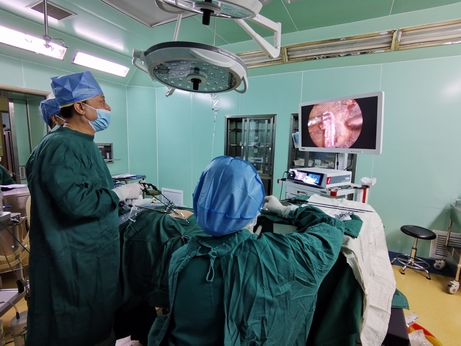Laparoscopic Camera: Revolutionizing Minimally Invasive Surgery
Laparoscopic surgery, also known as minimally invasive surgery, has revolutionized the medical industry by providing a less invasive option for surgical procedures. In laparoscopic surgery, small incisions are made in the patient's body through which a laparoscope, a thin tube with a camera and light at the end, is inserted. This allows surgeons to view the internal organs and perform the surgery with the help of specialized instruments. The laparoscopic camera, which is an essential component of this system, has played a significant role in making this technique widely adopted.

A laparoscopic camera, also known as a video laparoscope, is a device that uses a charge-coupled device (CCD) or complementary metal-oxide-semiconductor (CMOS) sensor to capture high-definition images of the surgical site. These cameras are designed to be minimally invasive and provide excellent visualization for the surgeon. They can be connected to a video monitor, enabling the entire surgical team to view the procedure in real-time.
One of the most significant advantages of laparoscopic cameras is the high-definition image quality they provide. The high resolution of the camera allows for excellent visualization of the surgical site, allowing the surgeon to see the area being operated on in much greater detail than with traditional open surgery. Additionally, the camera's light source provides bright, clear illumination, reducing the need for external lighting.
Laparoscopic cameras are also incredibly versatile and can be used in a variety of procedures, including appendectomies, hernia repairs, and gallbladder removals. The camera's ability to capture images from different angles and zoom in on specific areas makes it an essential tool for many types of surgeries.
Furthermore, the use of laparoscopic cameras has also led to a decrease in surgical trauma and faster patient recovery times. The minimally invasive nature of the surgery means smaller incisions, which reduces the risk of infection, scarring, and blood loss. Patients also experience less pain and discomfort and typically have shorter hospital stays and recovery times.
In conclusion, the laparoscopic camera has revolutionized the field of minimally invasive surgery. With its ability to provide high-definition images of the surgical site and improve patient outcomes, it has become an essential tool for surgeons. As technology continues to advance, we can expect to see further improvements in laparoscopic cameras and their associated systems, ultimately leading to better patient care and outcomes.
Leave a comment